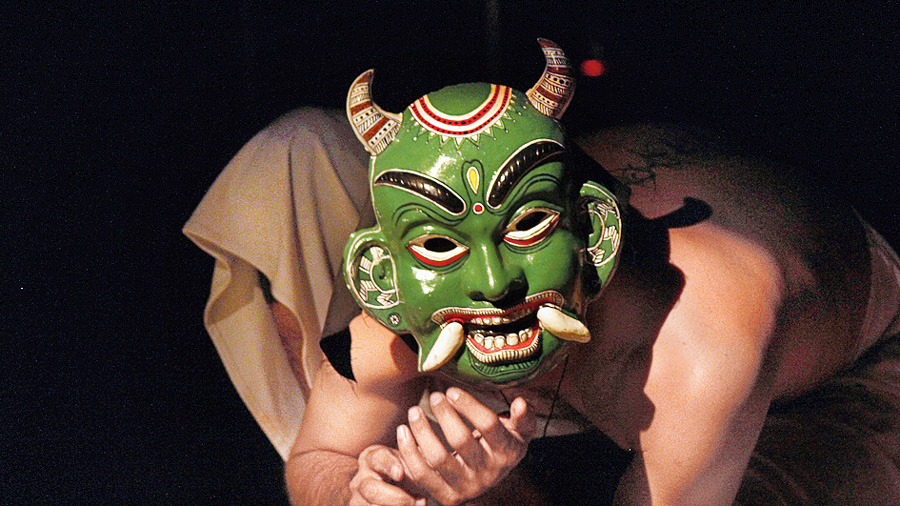In the weighty darkness of her bedchamber in which the shadows are enhanced by the flickering light of earthen lamps and heighten a sense of foreboding, Draupadi awaits the return of her beloved husband, Arjun. He is coming back after twelve years. Patta Mahishi (queen in power) to the Pandava clan, Draupadi prepares for his arrival, as he brings his new bride home. Draupadi’s ears smart with the praises of her mother-in-law, Kunti, for the new entrant into the family. Her heart bursts with waves of contradictory emotions.
Beginning with her back turned to us, Sharmila Biswas delineates the story of the tense meeting between Draupadi and Subhadra, using dramatic ‘hasta abhinaya’ or hand gestures. Then she turns around to tell the tale from the point of view of a powerful woman who, nevertheless, is a victim of political ambition. In Upeksha, or Disregard, one of the three dance films created under the Sangeet Natak Academy’s Antaranga series (picture, bottom), Biswas offers a hauntingly immersive experience of restrained anger and sarcasm replete with the paradoxes of Draupadi’s extraordinary situation.
In her first foray into the territory of filming performances through three works, Departure, Upeksha and Apeksha, Biswas uses sets, props, music, voice-over, light — and indeed, tellingly, darkness — to explore the nuances of dance and abhinaya that only the lens of a camera can catch. The result is three delicate films with Upeksha, the most complex, at its centre.

A moment from Raavana in Ten Minds by Harshal Vyas, presented by the Chidakash Kalalay and Bengal Repertory at the Padatik Little Theatre. Kathakali Jana.
Departure explores the separation of a youthful daughter from her mother as she ventures into the future, its music based on the Tagore song, “Phule phule dhole dhole”, while Apeksha tells the story of a restless Radha in Vrindavan, forever waiting for the ever-elusive Krishna.
In Ashavari Majumdar’s recent 40-minute work, Kathak 2.0, produced as a video, the dancer-choreographer attempts an experimental study of turning a machine into artistic inspiration. She uses its metallic noise as the ‘musical’ framework of her piece. Her traditional dance form, consequently, becomes a fragmented and minimalistic routine of deconstructed, robotic movement patterns. Her body responds to a new way of thinking as her dance vocabulary discovers a contemporary aesthetic of its own. This allows her to render a daily-ness to the visual imagination of her classical form, making it an idiom for a visceral creative experience. In Majumdar’s journey to the intersection of art and technology, she discovers a conduit to an eerie dystopian digital future. Her piece could be the preview of a larger work that combines the ancient classical with the futuristic. If the former came about centuries before today’s automated existence, the two must meet at a point of truth.
One of the few live dance performances in recent times in the city was Raavana in Ten Minds (picture, top), Harshal Vyas’s work presented by the Chidakash Kalalay and Bengal Repertory at the Padatik Little Theatre. In this piece, Vyas revisits the Ramayana to explore it from the point of view of Raavan. Stripped of the banal monstrosity attributed to him by Valmiki, Raavan emerges as a normal human, his head cluttered with conflicting emotions. Vyas’s Ramayana, interestingly, is not a fight between good and evil but the collaboration of the two in the mind of one person. Using masks, contemporary dance movements and Kalaripayattu, Vyas tells the tale of the intriguing epic villain in a richly textured vocabulary.










